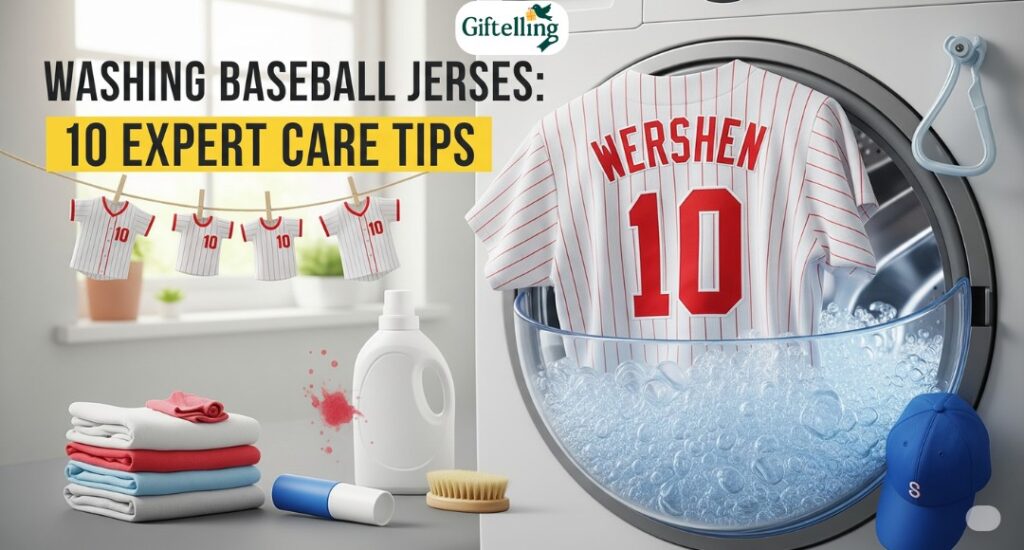Blogs
Washing Baseball Jerseys: 10 Expert Care Tips
Master the art of washing baseball jerseys with professional techniques that preserve colors, graphics, and fabric integrity while eliminating odors and stains effectively.
Washing baseball jerseys properly extends their lifespan while maintaining the vibrant colors and crisp graphics that make them special. Whether you’re caring for a Little League uniform or a cherished vintage jersey, the right washing techniques preserve both performance and appearance.
Modern baseball jerseys feature advanced synthetic materials, heat-pressed numbers, and intricate designs that require specific care approaches. Understanding these materials and their unique requirements ensures your jerseys remain in excellent condition through countless games and seasons.
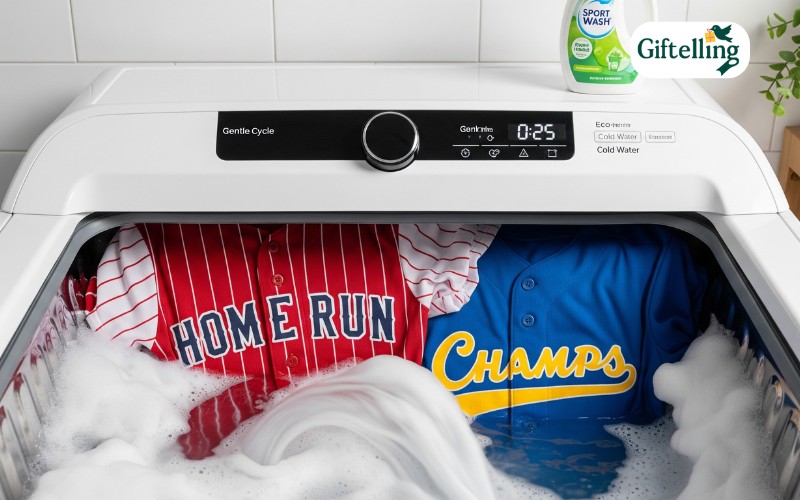
Why proper jersey washing matters
Proper baseball jersey care maintains fabric integrity while preserving the visual elements that make each jersey unique. Incorrect washing methods can cause irreversible damage including color fading, graphic peeling, and fabric deterioration that ruins valuable uniforms.
Athletic fabrics used in modern jerseys contain moisture-wicking properties and stretch fibers that require gentle treatment to maintain their performance characteristics. Harsh washing conditions can compromise these features, reducing the jersey’s effectiveness during athletic activities.
Investment protection represents another crucial aspect of proper jersey care, especially for expensive custom or vintage pieces. Following correct washing procedures preserves both monetary and sentimental value while ensuring jerseys remain game-ready for years.
Pre-washing preparation steps
Effective washing baseball jerseys begins with thorough pre-treatment that addresses specific stains and prepares fabrics for cleaning. Inspect jerseys carefully for grass stains, dirt, sweat marks, and any damaged areas that require special attention.
Remove any detachable elements like patches or pins before washing to prevent damage or loss during the cleaning cycle. Check pockets for items and ensure all zippers or snaps are properly closed to prevent snagging during agitation.
Sort jerseys by color and fabric type to prevent color bleeding and ensure appropriate wash settings for each group. White jerseys should be washed separately from colored ones, while heavily soiled uniforms may benefit from pre-soaking treatments.
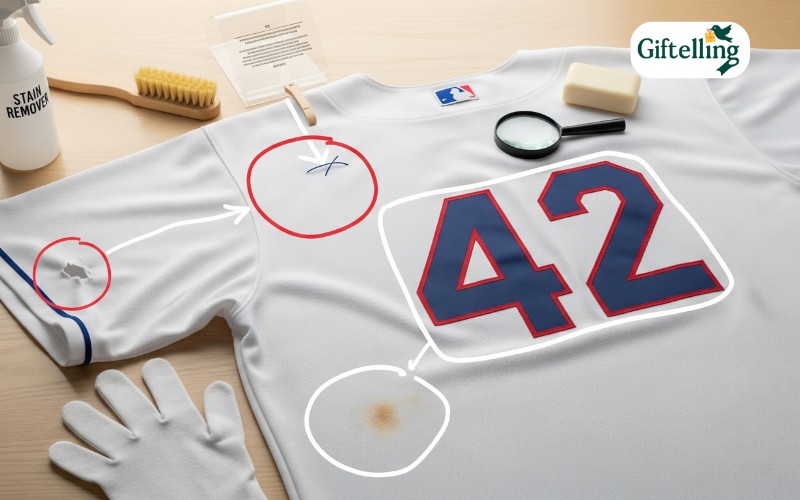
Temperature and water settings
Cold water washing protects baseball jersey colors and prevents shrinkage while effectively removing most dirt and odors. Water temperatures above 80°F can cause synthetic fabrics to break down and graphics to deteriorate prematurely.
Optimal washing conditions include:
- Water temperature: Cold (60-70°F)
- Wash cycle: Gentle or delicate setting
- Spin speed: Low to medium intensity
- Load size: Small to medium capacity
- Water level: Adequate for proper agitation
Hard water areas may require water softening additives to prevent mineral buildup that can make fabrics stiff and dull colors over time. Testing water hardness helps determine if additional treatment is necessary for optimal results.
Selecting the right detergent
Choosing appropriate detergents for washing baseball jerseys ensures effective cleaning without damaging delicate fabrics or graphics. Mild, enzyme-based detergents work best for synthetic athletic materials while avoiding harsh chemicals that can cause fading.
Recommended detergent characteristics include:
- Free from bleach and optical brighteners
- Low-suds formula for high-efficiency machines
- Enzyme-enhanced for protein stain removal
- pH-balanced for fabric protection
- Fragrance-free to prevent skin irritation
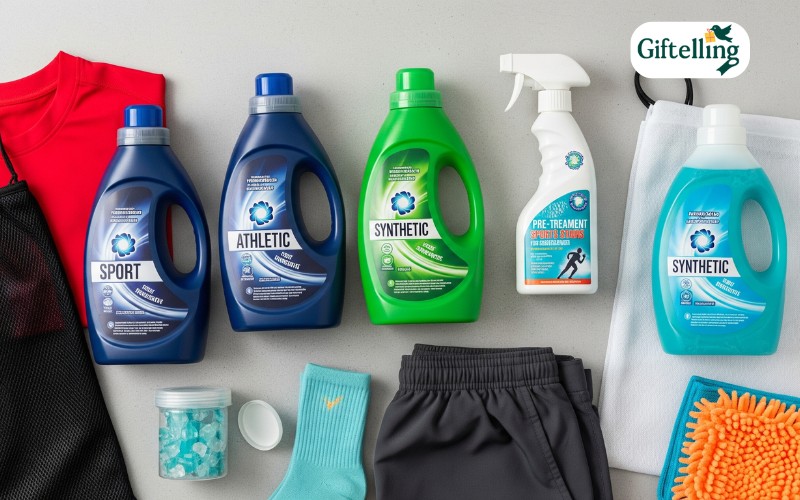
Avoid fabric softeners completely when washing baseball jerseys as they can coat synthetic fibers and reduce moisture-wicking capabilities. These products also interfere with the jersey’s breathability and can cause graphics to deteriorate faster.
Washing machine settings and techniques
Proper machine settings protect baseball jerseys from unnecessary wear while ensuring thorough cleaning. Turn jerseys inside out before washing to protect printed numbers, names, and logos from direct agitation and friction damage.
Use mesh laundry bags for valuable or delicate jerseys to provide extra protection during the wash cycle. This technique is particularly important for vintage jerseys or those with embroidered details that could snag on other items.
“Always wash baseball jerseys inside out and use cold water to preserve both the fabric and any applied graphics. This simple step can extend a jersey’s life by several seasons.” – Professional Uniform Care Specialist
Load balancing prevents excessive agitation that can stretch fabrics or cause graphics to crack. Wash jerseys with similar items like athletic shorts or practice shirts rather than heavy items like jeans or towels.
Hand washing methods
Hand washing provides the gentlest care for valuable or vintage baseball jerseys that require extra protection. This method offers complete control over agitation intensity and allows for targeted treatment of specific problem areas.
Fill a clean basin with cold water and add a small amount of mild detergent, creating a gentle cleaning solution. Submerge the jersey completely and allow it to soak for 15-20 minutes before beginning the cleaning process.
Gently agitate the jersey by swishing it through the water rather than scrubbing or wringing the fabric. Pay special attention to collar and cuff areas where dirt and sweat typically accumulate most heavily.
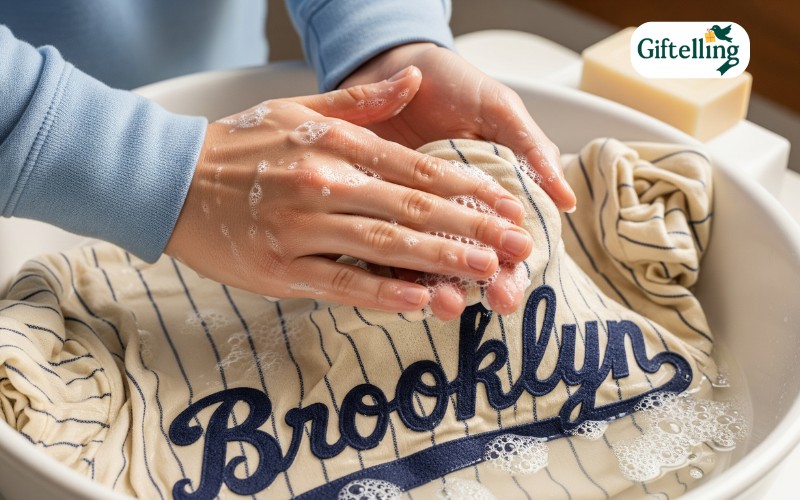
Effective drying techniques
Proper drying methods are crucial for maintaining baseball jersey shape and preventing damage to graphics and fabrics. Air drying represents the safest approach, preserving both the jersey’s fit and any applied decorations.
Lay jerseys flat on clean towels or hang them on padded hangers to maintain proper shape during the drying process. Avoid direct sunlight which can cause colors to fade and synthetic materials to become brittle over time.
Never use high heat settings in machine dryers as the intense temperatures can cause shrinkage, graphic cracking, and fabric damage. If machine drying is necessary, use the lowest heat setting and remove jerseys while slightly damp to finish air drying.
>>> See More: LSU Baseball Jersey Guide 15 Must-Know Facts for Fans
Stain removal strategies
Common baseball stains require specific treatment approaches when washing baseball jerseys to ensure complete removal without fabric damage. Grass stains respond well to enzyme-based pre-treatments applied directly to affected areas before washing.
Effective stain removal techniques include:
- Grass stains: Enzyme detergent pre-treatment
- Dirt and mud: Cold water rinse followed by gentle scrubbing
- Sweat stains: White vinegar solution pre-soak
- Blood stains: Hydrogen peroxide application
- Food stains: Dish soap pre-treatment
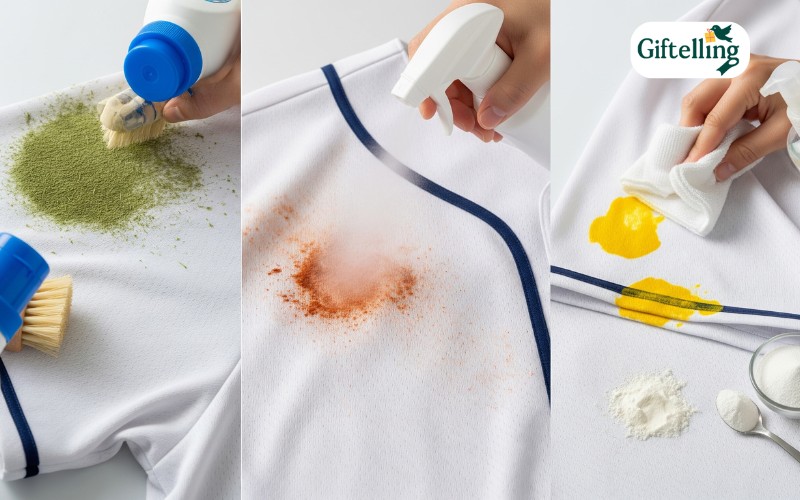
Treat stains as soon as possible after they occur for the best removal success. Set-in stains become increasingly difficult to remove and may require multiple treatment cycles or professional cleaning services.
Storage and maintenance tips
Proper storage between uses maintains baseball jersey condition and prevents damage from environmental factors. Clean jerseys thoroughly before storage to prevent stains from setting and odors from becoming permanent.
Store jerseys in cool, dry locations away from direct sunlight and heat sources that can cause fading and fabric degradation. Use breathable garment bags or acid-free boxes for long-term storage of valuable or vintage pieces.
Fold jerseys carefully along natural seam lines to minimize creasing, or hang them on padded hangers to maintain shape. Avoid wire hangers that can stretch shoulder areas and create permanent deformation.
Common washing mistakes to avoid
Avoiding common errors when washing baseball jerseys prevents costly damage and extends uniform lifespan significantly. Hot water washing ranks among the most damaging mistakes, causing shrinkage, color loss, and graphic deterioration.
Frequent washing mistakes include:
- Using hot water temperatures
- Adding fabric softener or bleach
- Overloading washing machines
- High-heat machine drying
- Ignoring care label instructions
- Delaying stain treatment
Rushing the washing process often leads to inadequate cleaning or fabric damage that could have been prevented with proper techniques. Taking time to follow correct procedures ensures better results and longer jersey life.
Professional vs home care
Professional cleaning services offer expertise and specialized equipment for baseball jerseys requiring intensive care or restoration. These services prove particularly valuable for vintage jerseys, expensive custom pieces, or severely stained uniforms.
Home care suffices for routine maintenance of modern jerseys when proper techniques are followed consistently. Understanding when to seek professional help prevents amateur mistakes that could permanently damage valuable uniforms.
Consider professional cleaning for jerseys with set-in stains, delicate vintage materials, or significant sentimental value where home cleaning risks outweigh potential benefits. Professional services also offer specialized treatments like color restoration and graphic repair.
Seasonal care considerations
Washing baseball jerseys during different seasons requires adjustments for varying soil levels and usage patterns. Spring training and summer games typically result in heavier soiling that demands more intensive cleaning approaches.
End-of-season care involves thorough cleaning and proper storage preparation to maintain jersey condition during off-season periods. This comprehensive care prevents permanent staining and ensures jerseys remain ready for the following season.
Winter storage requires extra attention to environmental conditions, as fluctuating temperatures and humidity levels can cause fabric damage and promote mold growth in improperly stored jerseys.
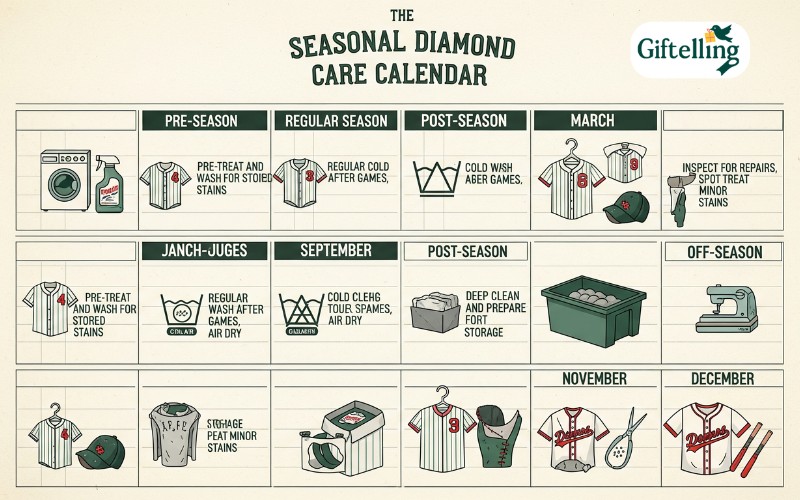
Frequently asked questions
1, How often should baseball jerseys be washed?
- Baseball jerseys should be washed after every use to prevent odor buildup and stain setting, especially during active playing seasons when sweat and dirt accumulation is significant.
2, Can I use bleach on white baseball jerseys?
- Avoid bleach on baseball jerseys as it can weaken synthetic fibers and damage graphics, even on white uniforms. Use oxygen-based brighteners for safe whitening alternatives.
3, What temperature water is best for washing jerseys?
- Cold water (60-70°F) is optimal for washing baseball jerseys as it prevents shrinkage, color fading, and graphic damage while still providing effective cleaning.
4, How do I remove grass stains from jerseys?
- Pre-treat grass stains with enzyme-based detergent before washing, allowing the treatment to work for 15-20 minutes before proceeding with normal washing cycle.
5, Is it safe to machine dry baseball jerseys?
- Air drying is safest for baseball jerseys, but if machine drying is necessary, use the lowest heat setting and remove jerseys while slightly damp to finish air drying.
6, Can I wash different colored jerseys together?
- Wash similar colors together and separate white jerseys from colored ones to prevent color bleeding and maintain the original appearance of each uniform.
Mastering the art of washing baseball jerseys ensures your valuable uniforms maintain their appearance, performance, and longevity through countless games and seasons. From pre-treatment techniques to proper drying methods, each step contributes to preserving the investment and memories associated with these special garments.
The combination of cold water washing, gentle detergents, and air drying provides the foundation for effective jersey care that protects both fabric integrity and graphic elements. Avoiding common mistakes while implementing professional techniques transforms routine laundry into a preservation practice that extends jersey life significantly.
Ready to ensure your baseball jerseys receive the expert care they deserve? Explore premium jersey care products and professional-quality uniforms at Giftelling.com, where quality materials and expert guidance help you maintain your jerseys in championship condition for years to come.

